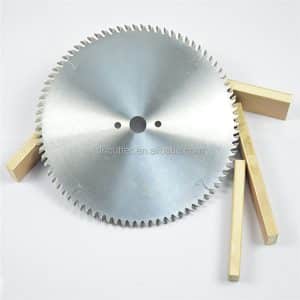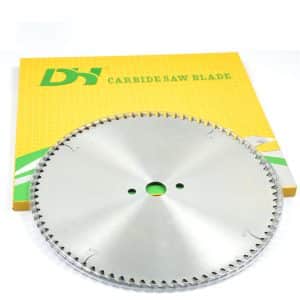Circular saw blades are an essential tool for many projects due to their versatility.
Different types of circular saw blades are designed for different materials and tasks, such as wood, plastic, metal, concrete, and masonry. Choosing the right circular saw blade for your project is important because the right blade can lead to better performance and ensure your safety during operation.
Although saw blades have the same exterior, they are designed for specific tools and applications. Saw blades have different functions on different devices and their applications will vary.
This article will expand on these two elements and briefly describe the applicable scenarios of three types of saw blades.
Diameter
The diameter of the circular saw blade is a very important deciding factor because for every mechanical device and handheld power tool, only a certain size can be loaded on the device.
For table saws, a blade with a diameter of 254 mm is generally accepted. For hand circular saws, typically 165mm or 190mm; for miter and radial arm saws, typically 254mm or 304mm, and for sliding table saws, blades with a diameter of 315mm or 350mm or larger are acceptable . These tools also work with smaller blades, but don’t try to use larger blades if you set the diameter range. It may be difficult to find replacement blades in this size.
Therefore, before purchasing a new saw blade, you should make sure it fits your machine. Choose the correct size so that your circular saw blade works perfectly with your machine.
Kerf
The kerf refers to the thickness of the groove that the circular saw blade passes through. Additionally, it can be used to define the thickness of the blade teeth themselves, or at least the thickness at the widest point on the blade. Cut thickness affects cutting width, cost, power consumption and the rate of wood loss during processing. The cut is usually wider than the blade base.
If you look at the construction of a carbide circular saw blade, you will see that the blade has a small carbide tip welded to it, which makes the cutting edge thicker than the blade itself.
For high-speed steel saw blades, although the cutting edge is still thicker than the blade itself, the cutting edge and saw blade are one.
The thicker the blade, the less likely it is to bend and the kerf will be wider. For this reason, heavy-duty stationary table saws typically use 3.2mm blades. This blade can easily cut through high-density hardwoods due to the power provided by the blade.
Table saws, miter saws, and radial arm saws rated below 1.1KW are usually equipped with thinner blades (approximately 2.4mm) for better performance power.
Portable circular saws, especially lithium-ion handheld saws, use thinner blades. It’s hard to find 3.2mm blades for portable saws. These ultra-thin blades put less stress on the saw and do not bend significantly due to their smaller diameter.
So the next time when you choose a saw blade, you need to consider both of the above factors and choose the right blade for your saw. Next, we will briefly introduce the three common saw blades used in woodworking.
Ripping Blades
Rip blades or rip cutting blades are designed to produce straight, long cuts along the grain of the wood. Typically, they have fewer teeth than crosscut blades (approximately 16 to 40) and have deep grooves for effective removal of wood chips and sawdust. The teeth of the ripping blade have a shallow rake angle to prevent the blade from grabbing the workpiece during operation. Tear cutting blades require faster cutting speeds, resulting in rough cuts. Using a ripping blade for cross-cutting is not recommended as it can result in poor cut quality and lead to kickback.
Crosscutting Blades
As opposed to ripping blades, crosscut blades or crosscut blades are great for cutting against the grain of the wood. They have more teeth (approximately 60 to 80) and shallower gullets, making them ideal for cutting solid wood such as hardwood and softwood. Crosscut blades produce extremely clean, smooth cuts with less tearing. They have a steeper rake angle for a more aggressive, smoother cut at low speeds. Also, do not use a cross-cutting blade for tearing.
Combination/General-purpose Blades
Combination blades are sometimes called universal blades. They are designed to tear and transverse at the same time. With the combination blade, we don’t need to switch blades when changing the cutting direction. The combination blade also combines flat and alternating top helical teeth to ensure performance. Flat teeth cut as fast as a rip, while alternating top bevel teeth produce clean, precise cuts like a crosscut. However, for more specific tasks, dedicated rip or cross-cut blades are recommended.




